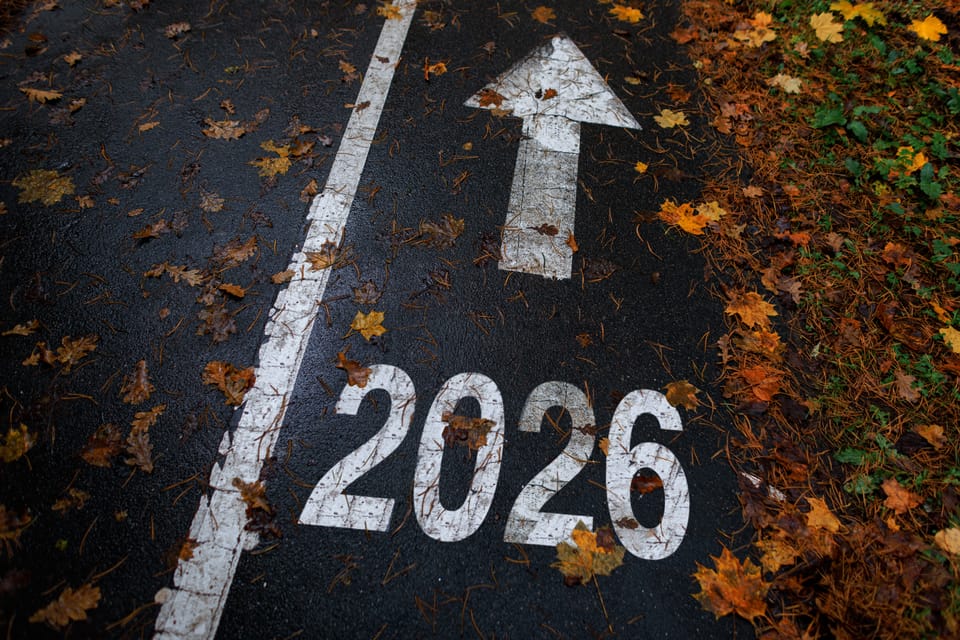Your P&L Can’t See Points - But Your Competitors Can
Your accountant won’t flag it. Your CFO won’t track it. Your team won’t notice it. But your competitors? They’re using it. Loyalty assets are real—even if they don’t show up on the P&L. Ignore them, and you’re funding someone else’s growth with your own spend.


If You Only Had 60 Seconds to Read This Article (Click Here)
Most SMBs leave 3–5% of their monthly spend in unrealized loyalty value. For a company spending $85K/month, that’s $30K–$50K a year—lost to untracked points, poor redemptions, and scattered card usage. The profit-and-loss statement won’t reflect this waste, but it directly impacts margins, team perks, and client-facing experiences.
Companies that centralize their points strategy can drive up effective return on spend from ~1.2% to over 4.5%. That means a $100K/month card budget yields $54K/year in usable rewards—not via extra spending, but by pooling points, leveraging transfer partners, and timing redemptions for high-value experiences like business-class travel or executive offsites.
Data shows the average SMB using 3+ cards across different departments is leaking 60–75% of its loyalty value—either through suboptimal cashback usage, expiring rewards, or employee-controlled accounts. Strategic redemptions (like transferring to airline partners) regularly generate 3–7x more value than cash equivalents.
In real-world cases, companies that adopt structured loyalty systems see measurable results: improved retention, higher perceived value in employee rewards, and lower out-of-pocket costs for essential travel and client engagement. These "shadow assets" may not be on your balance sheet, but they’re shaping your competitive edge—quietly and decisively.
Everything else you need to know is just below 👇🏻
Your profit and loss statement is lying to you. Not out of malice. Just out of omission.
Because for most business owners, there’s no clean line item that says:
"Points earned this quarter: 1.2M"
"Redeemed strategically: 18%"
"Wasted via cashback: 74%"
"Transferred to an employee’s personal card: unknown"
And yet, these hidden figures tell a story. One of missed opportunity, unseen leverage, and unrealized profit.
If you can't track it, you can't optimize it. And what you can't optimize? You can't scale, reinvest, or even protect. Meanwhile, your competitors are turning the same dollars into much more—just by treating points like capital.
Welcome to the quiet battlefield of shadow assets—specifically, your company’s points, miles, and loyalty currency.
The Invisible Currency You Already Earn
Every time your company swipes a card—for media spend, vendor payments, SaaS subscriptions, travel bookings, bonuses—you’re earning more than just a service or a product. You’re earning value in a second, quieter economy: the loyalty economy.
This second economy includes:
- Airline miles
- Hotel points
- Cashback rebates
- Statement credits
- Travel vouchers
- Transferable reward currencies
But here’s the catch: if you don’t have visibility, that value may as well not exist.
In too many businesses, points get buried or ignored:
- The operations manager racks up hotel points but uses them for personal vacations.
- The marketing lead pays for $30K in ad spend on their own card, keeping airline miles quietly.
- Finance never tracks points earned, only dollars spent.
How the Other Guys Are Beating You Without Spending More
Let’s visualize two businesses. Same size. Same industry. Same monthly card spend: $100,000.
Company A:
- 4 different department heads using their own preferred cards
- Employees choosing whatever card gets them the best perks personally
- No redemption planning—points occasionally used for gift cards or cashback
- Roughly 1.2% value realized per dollar spent
Company B:
- All cards issued under one program or centralized ecosystem
- Points flow into shared loyalty accounts
- Redemptions handled by someone who understands award travel, point valuations, and airline transfer partners
- Business class travel for client meetings
- High-perceived-value team perks
- Result: 4.6%+ effective return on spend
The difference? One is letting points trickle away, the other is making them work. And it shows.
Company B isn’t just saving money—it’s reinvesting loyalty currency in ways that boost morale, elevate client experience, and stretch capital.
What You Think Is a Perk Is Actually a Profit Lever
Let’s rethink points entirely.
They’re not fringe perks. They’re not accidental windfalls. They’re not just fun little extras for your team.
Points are a stored form of capital—an alternative budget, silently growing with every dollar you spend.
If you treat points as miscellaneous, you’re doing the financial equivalent of ignoring tax credits or failing to collect on rebates. Not because they’re small, but because they’re invisible.
The Shadow Asset Framework: Three Levers That Matter
Here’s how you begin to reclaim what you’re likely losing. It comes down to three levers: Centralization, Optimization, Redeployment.
1. Centralization
If points are scattered across multiple programs, personal cards, or unmanaged accounts—you’ve already lost half the game.
Centralizing means:
- Using a unified card program or rewards ecosystem
- Tracking all points across departments
- Creating visibility into who earns what and when
This isn’t just operational hygiene. It’s a control strategy.
2. Optimization
Points lose value when they’re redeemed poorly. This happens more often than most founders realize.
Optimizing means knowing:
- Which transfer partners yield outsized value
- How to time redemptions for business class flights or premium hotels
- When to choose experiences over cash equivalents
- What redemptions offer 3–5x the return of statement credits
Without this strategy, your business might be burning six figures of loyalty value annually—while thinking it’s getting a deal.
3. Redeployment
Once you’ve centralized and optimized, the final step is to use points in ways that multiply value.
That means reinvesting them in your:
- Sales team (think: luxury retreat prizes for quota crushers)
- Clients (impressive travel experiences without the outlay)
- Leadership (offsites that build vision and momentum)
- Hiring strategy (incentives that move the needle without cutting into runway)
The Psychology of Leverage
Points are one of the few currencies that multiply when used strategically.
While a dollar is static—spent once and gone—points can stretch, elevate, and reinforce. They are a form of soft powerin your company’s financial engine.
Let’s break that down:
- Time leverage: Book faster. Avoid reimbursement chaos. Save hours per trip.
- Capital leverage: Fund travel, team benefits, and client engagement—without impacting cashflow.
- Brand leverage: Appear far more established and generous than your P&L suggests.
- People leverage: Increase retention with experiences, not just raises.
Done right, points don’t just save money—they increase velocity.
What Happens When You Don’t
There’s a cost to inaction. It doesn’t show up as a red flag. It creeps in slowly.
Without a points strategy:
- The employee with the best personal card wins, regardless of what's best for the company
- Your clients fly coach while your competitors wine and dine theirs in business class
- Team incentives become cash-only, draining real dollars instead of earned rewards
- Points sit idle, misused, or lost entirely
This is not hypothetical. In an audit of small businesses spending $50K/month, the average missed or misused loyalty value was over $200,000 per year.
Your P&L Won’t Tell You This
Traditional accounting won’t catch loyalty leakage. There are no line items for:
- Missed transfer opportunities
- Poor redemptions
- Scattered programs
- Lost expiration value
But here’s what you will see:
- Higher travel costs than necessary
- Lower perceived value in team bonuses
- Client experiences that feel average, not premium
- A spend footprint that doesn’t stretch as far as it should
And what your books won’t show is this:
Your competitor just flew their C-suite to Tokyo. Your team flew economy to Kansas City.
What It Looks Like to Get It Right
Let’s ground this with a real scenario:
Company Type: Digital marketing agency
Monthly Spend: $85,000
Before:
- Points across five corporate and personal cards
- Redemptions mainly for cashback
- No visibility or strategy
After:
- Consolidated into a unified card and rewards strategy
- Points pooled across shared programs (airlines, hotels)
- Business-class flights for team travel
- Annual retreat booked on points
- High-value redemptions used for executive retention
Impact: Annual points value realized: $44,000+
This value was re-invested into business growth and culture—not lost to cashback mediocrity.
The Future Belongs to Businesses That Use Every Dollar Twice
The next generation of efficient businesses will master one thing:
Using every dollar twice.
Once for operations.
Once again through rewards.
Not by spending more.
But by managing smarter.
This is what it means to build financial leverage into your operational DNA. It’s not about luxury. It’s about efficiency. It’s about stretch. And it’s about building an edge that’s invisible to those who don’t look closely—but painfully obvious to those who do.
Final Thoughts: Visibility Is Leverage
You won’t find loyalty assets on your P&L. But they’re just as real as the line item for advertising spend or payroll. You’ve already earned them. The question is: Are you using them?
Because your competitors might be.
If this sounds like something you’ve let slip through the cracks, you’re not alone. But you don’t have to stay in the dark. Systems exist to help businesses bring structure, strategy, and scale to their points program.
That’s where UpNonStop comes in—designed to help companies like yours turn loyalty from a perk into a profit center. No gimmicks. No fluff. Just clear frameworks to track, optimize, and deploy points where they matter most.
Your books may not show it yet. But your competitors’ behavior already does.




